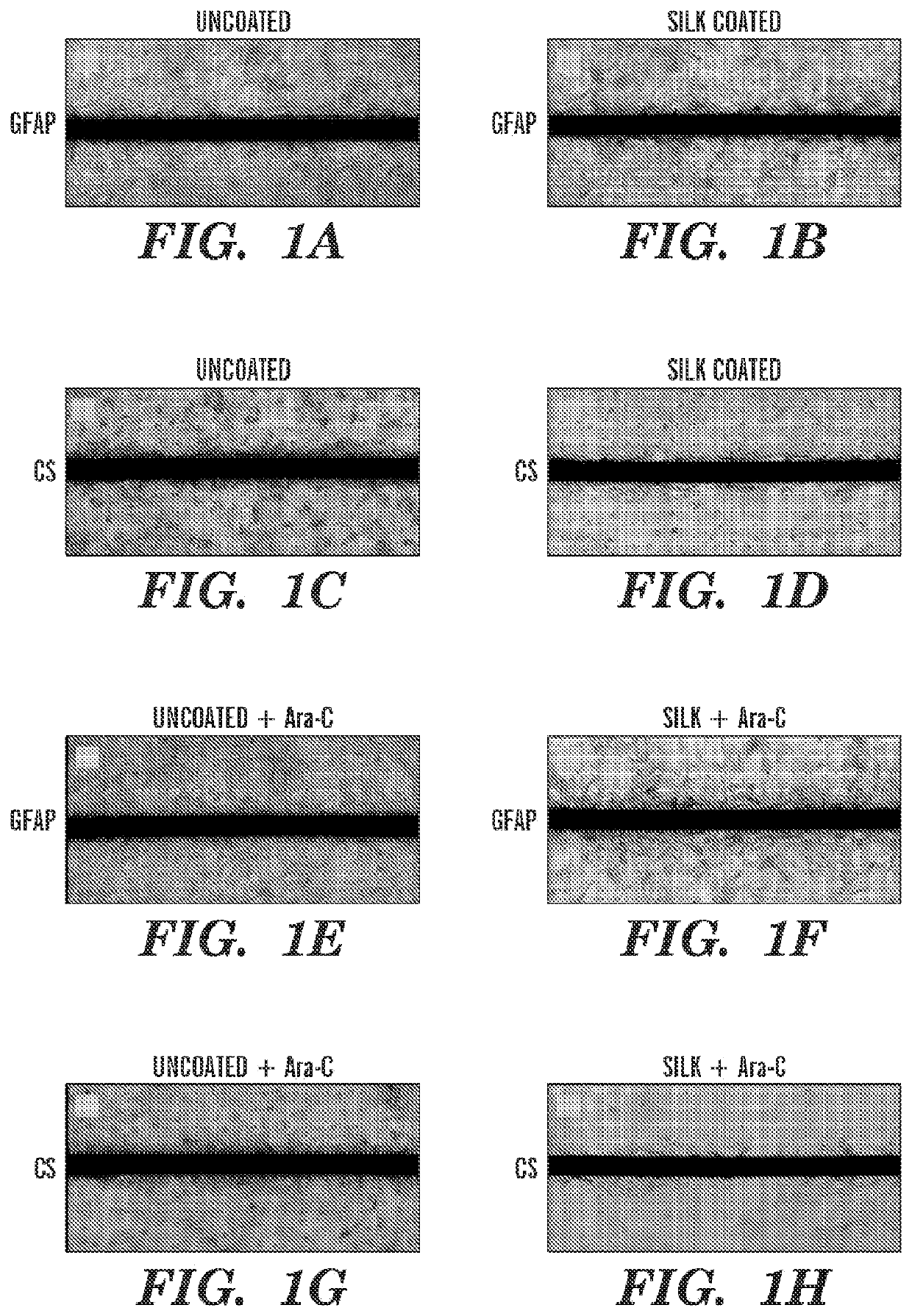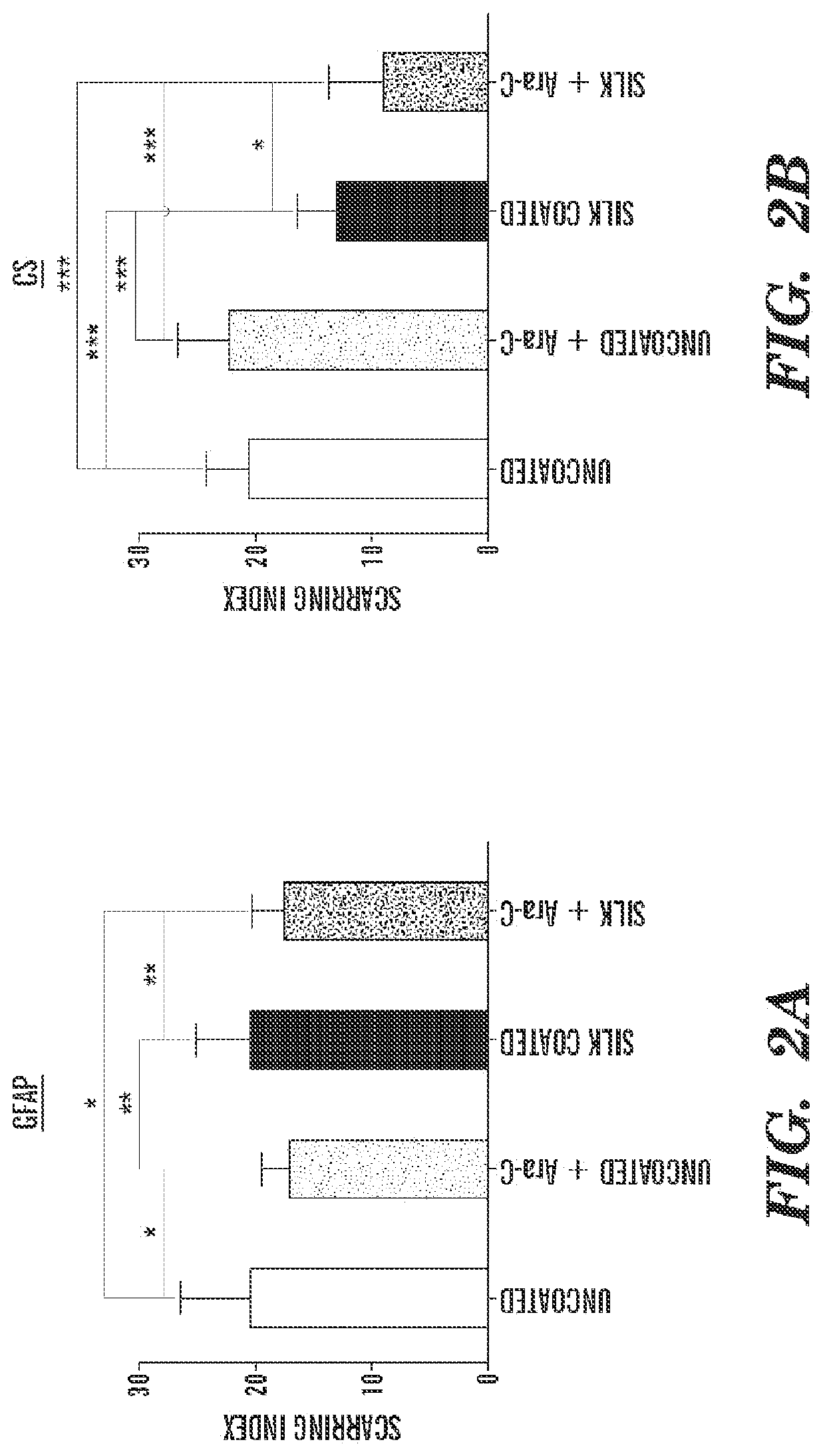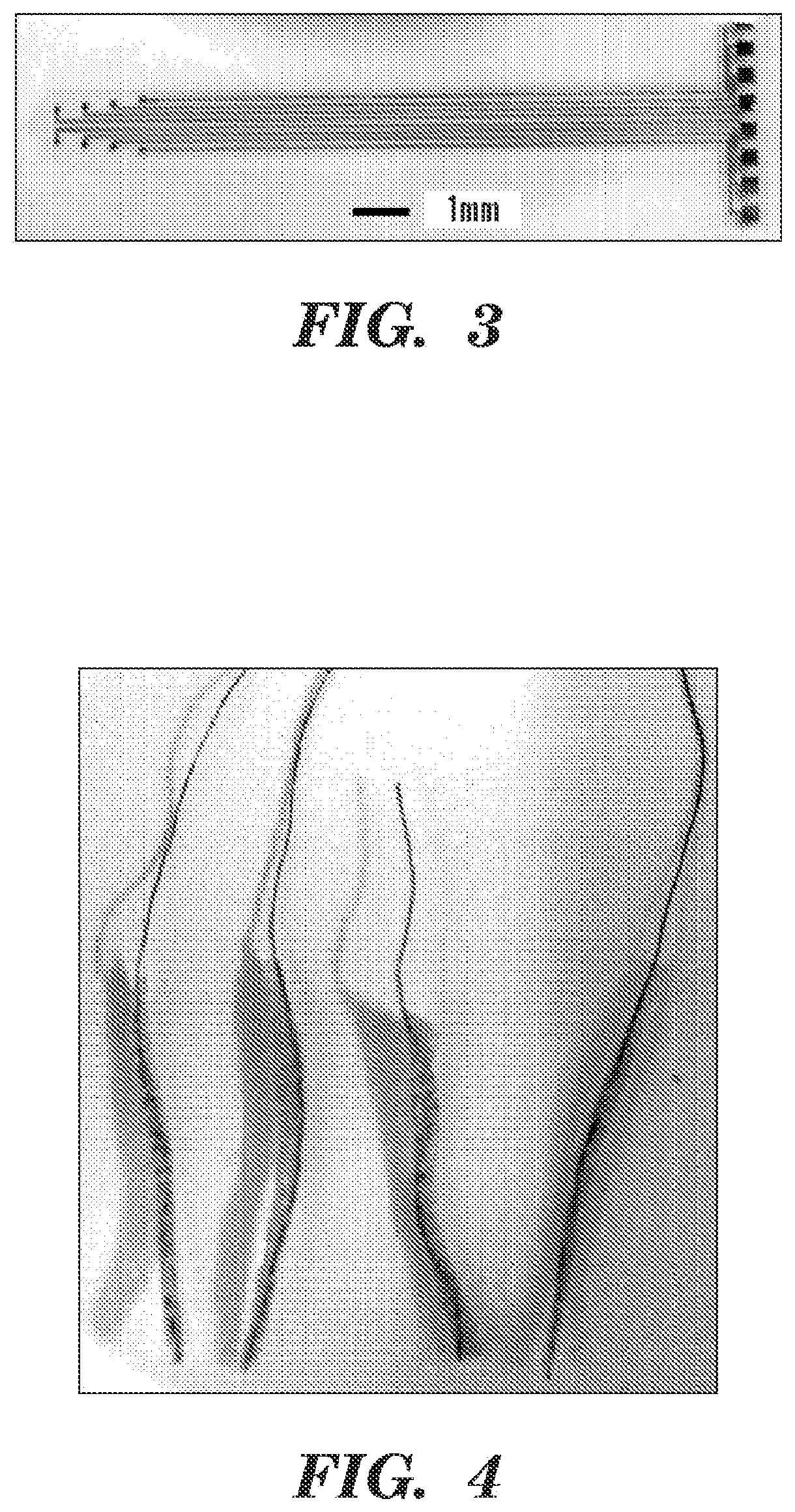Dynamic Silk Coatings for Implantable Devices
a technology of implantable devices and silk coatings, which is applied in the field of silk-based implantable systems and devices, can solve the problems of long-term reliability of chronic cortical electrode implants, lack of chronic reliability, and loss of the ability to record neurons, so as to improve the compliance and shorten the life of the electrode and the implant. the effect of the loss of function
- Summary
- Abstract
- Description
- Claims
- Application Information
AI Technical Summary
Benefits of technology
Problems solved by technology
Method used
Image
Examples
example 1
Materials and Methods
[0280]Preparation of Silk Solution.
[0281]Silk solution was prepared from Bombyx mori silkworm cocoons according to the procedures described in previously-reported studies (35-37). Cocoons of B. mori silkworm silk were supplied by Tajima Shoji Co. (Yokohama, Japan). Briefly, the cocoons were degummed in a boiling 0.020□M Na2CO3 (Sigma-Aldrich, St. Louis, Mo.) solution for 15 min. The fibroin extract was then rinsed three times in Milli-Q water, dissolved in a 9.3M LiBr solution yielding a 20% w / v solution, and subsequently dialyzed (MWCO 3,500 kDa) against distilled water for 2 days to obtain regenerated aqueous silk fibroin solution (ca. 8% w / v). The silk solution was concentrated to 15% w / v by dialysis overnight.
[0282]Fabrication of Electrodes.
[0283]Flexible electrodes (e.g., flexible cortical electrodes) could be fabricated by any standard MEMS fabrication techniques known in the art. In some embodiments, any art-recognized flexible electrodes can be used in t...
example 2
Coating of Flexible Neural Probes with Silk Fibroin
[0312]A layer-by-layer casting technique was used to coat a flexible electrode, e.g., a polyimide-based thin film neural probe) with silk fibroin. The probes were first centered, with electrode recording sites facing down, on PDMS molds that were fabricated using a laser cutter or soft lithography techniques. The shape of the PDMS mold can vary with the shape and / size of the electrode. The PDMS mold can partly determine the silk-coated electrode shank dimensions. Concentrated silk solution (15% w / v) was applied to the molds, e.g., by drawing a bead of solution from the tip of a pin head along the length of the probe shank. The draw speed and viscosity of the silk solution, as well as the mold shape, determined the amount of solution that adhered to the mold and probe. After drying, successive layers of silk were applied in the same manner in order to increase the thickness of the coating. Despite the manual nature of this coating te...
example 3
l Properties of Silk-Coated Probes
[0315]Uncoated, 3-layer, and 6-layer silk-coated probes can be mechanically characterized by driving the probes perpendicularly onto a precision analytical balance at a rate of about 0.5 mm / min. Without wishing to be bound by theory, there can be an initial linear increase in force while the probes remain straight before buckling. As the probes continue to be driven onto the balance, the shanks can begin to buckle and bend. This can be characterized by the peak and gradual decrease in force. Eventually, the silk coating on the 3 and 6 layer probes can fracture midway down the shank, which can be characterized by a sharp decrease in force exerted on the balance.
[0316]For practical in vivo applications, neural probes are desired to remain straight during insertion in order to reach a precisely targeted region of the brain. Therefore, the buckling force should not be exceeded during insertion through the pia mater and into the cortex. The average buckl...
PUM
 Login to View More
Login to View More Abstract
Description
Claims
Application Information
 Login to View More
Login to View More - R&D
- Intellectual Property
- Life Sciences
- Materials
- Tech Scout
- Unparalleled Data Quality
- Higher Quality Content
- 60% Fewer Hallucinations
Browse by: Latest US Patents, China's latest patents, Technical Efficacy Thesaurus, Application Domain, Technology Topic, Popular Technical Reports.
© 2025 PatSnap. All rights reserved.Legal|Privacy policy|Modern Slavery Act Transparency Statement|Sitemap|About US| Contact US: help@patsnap.com



